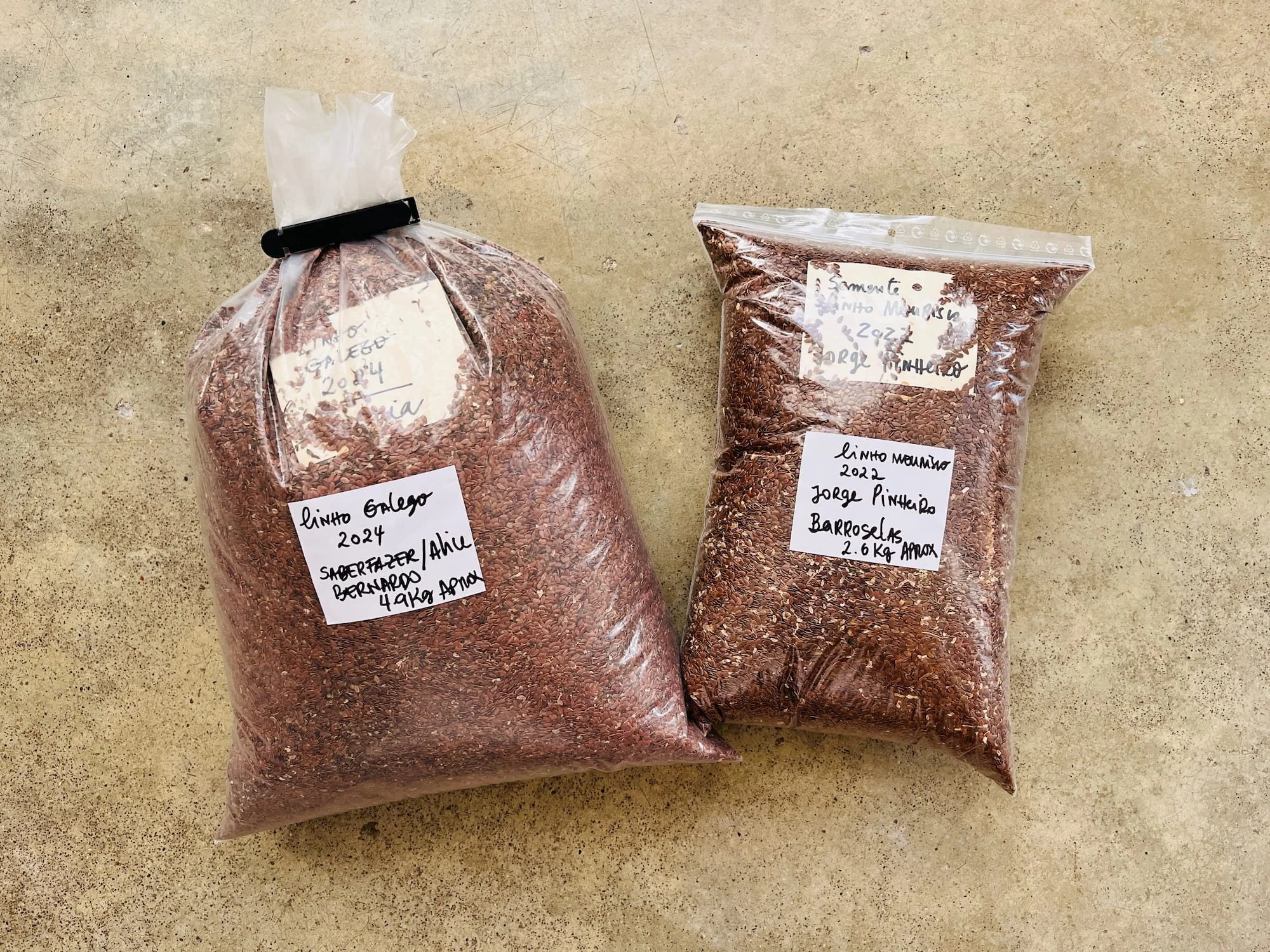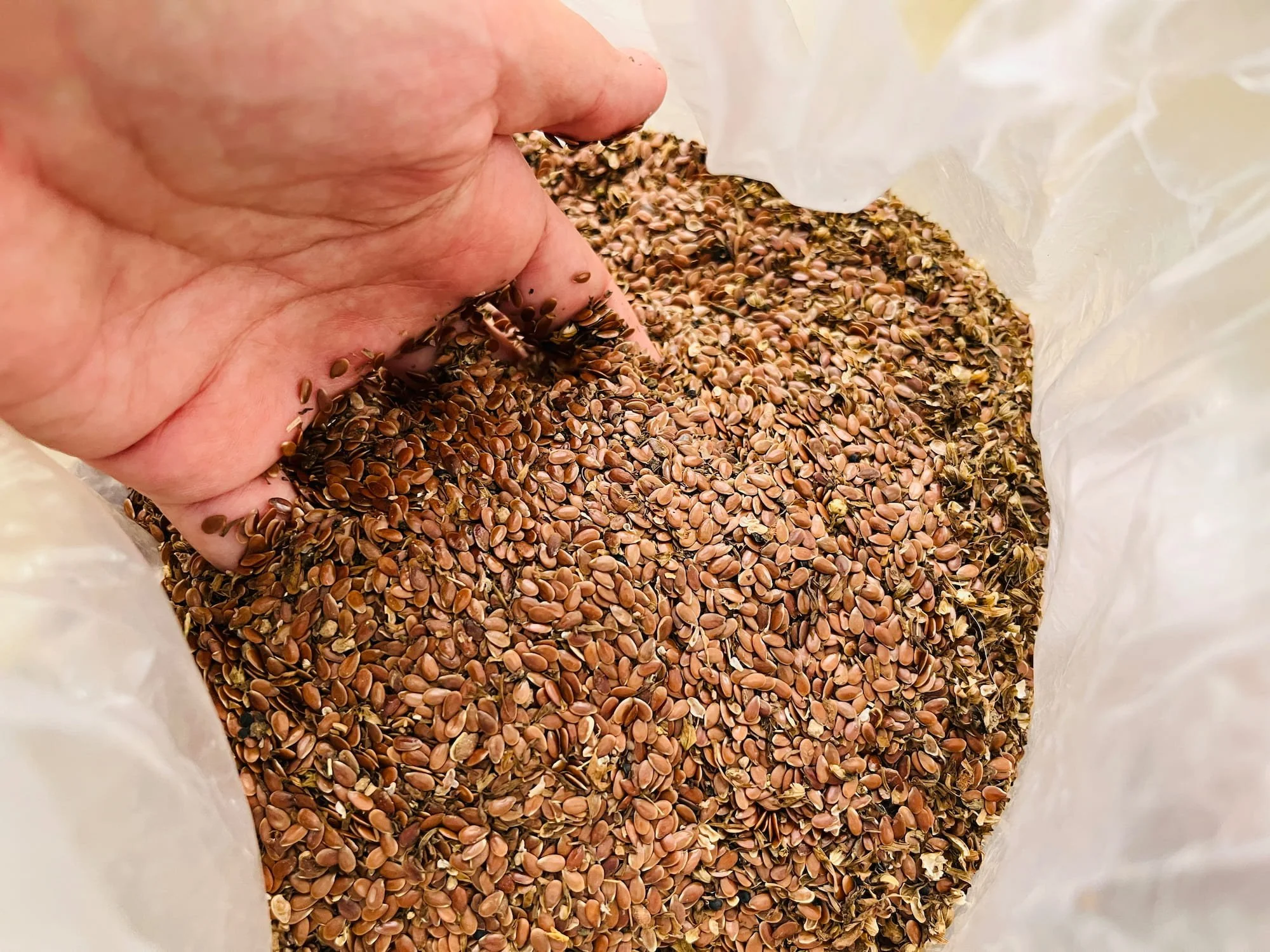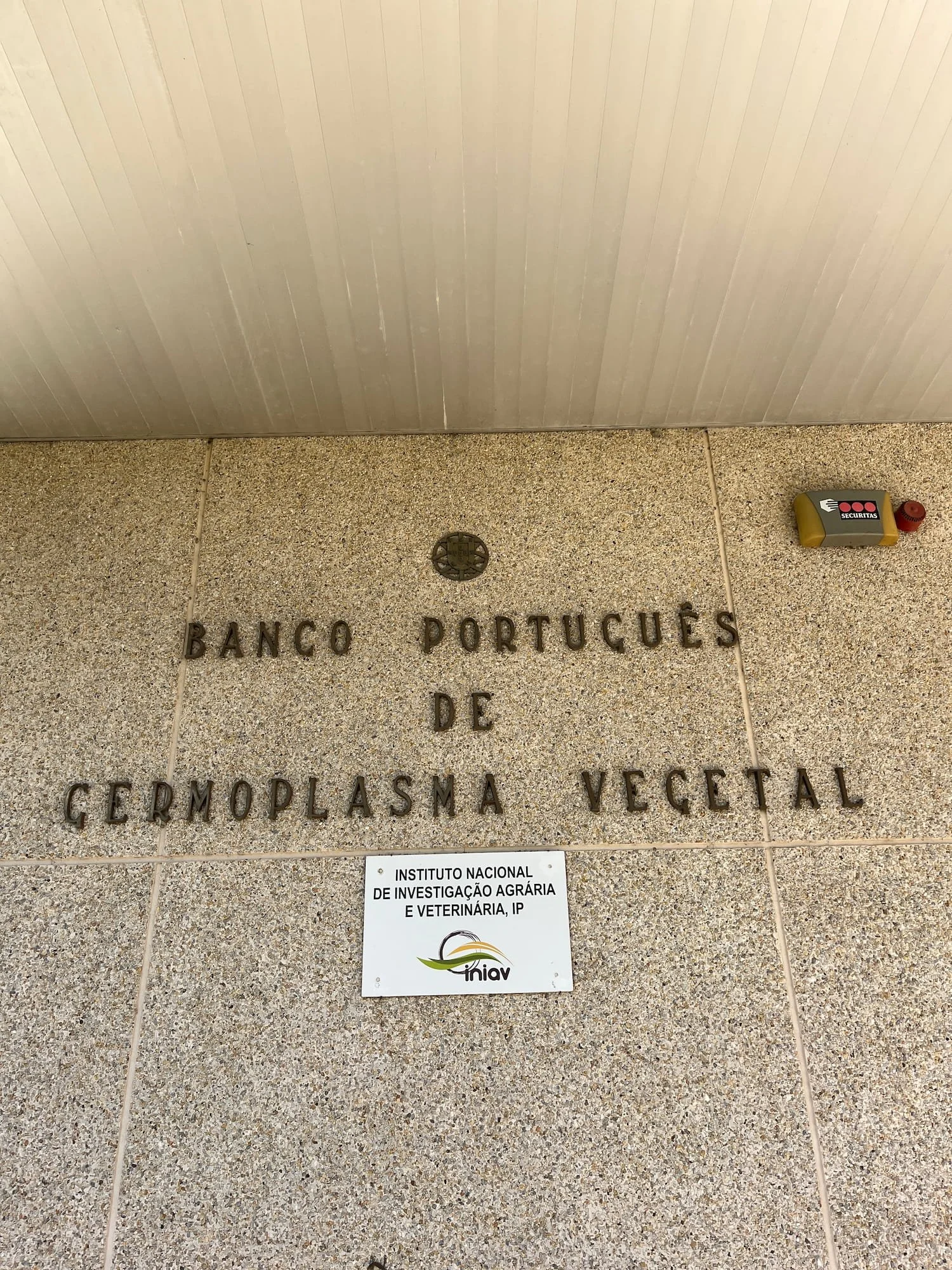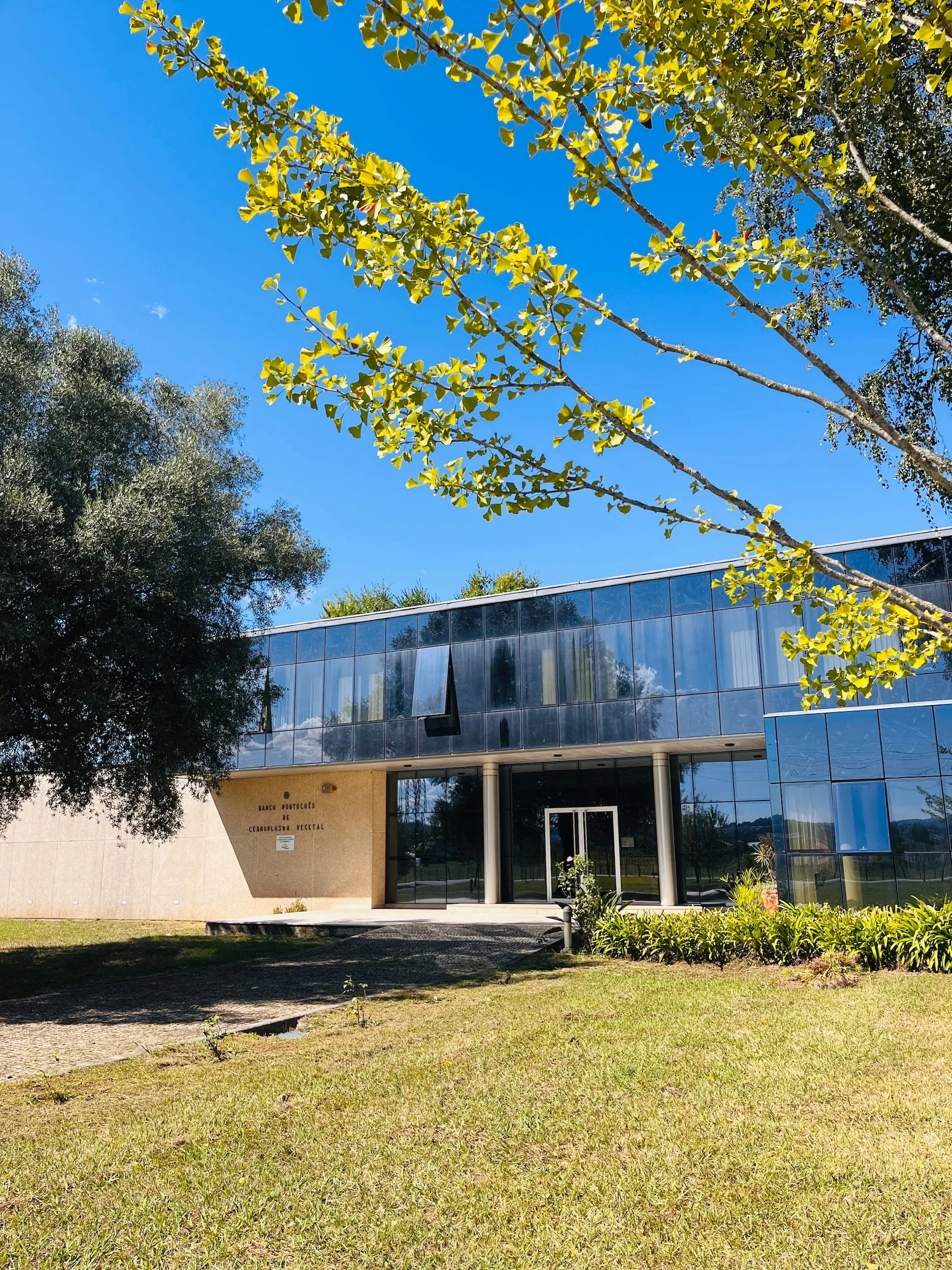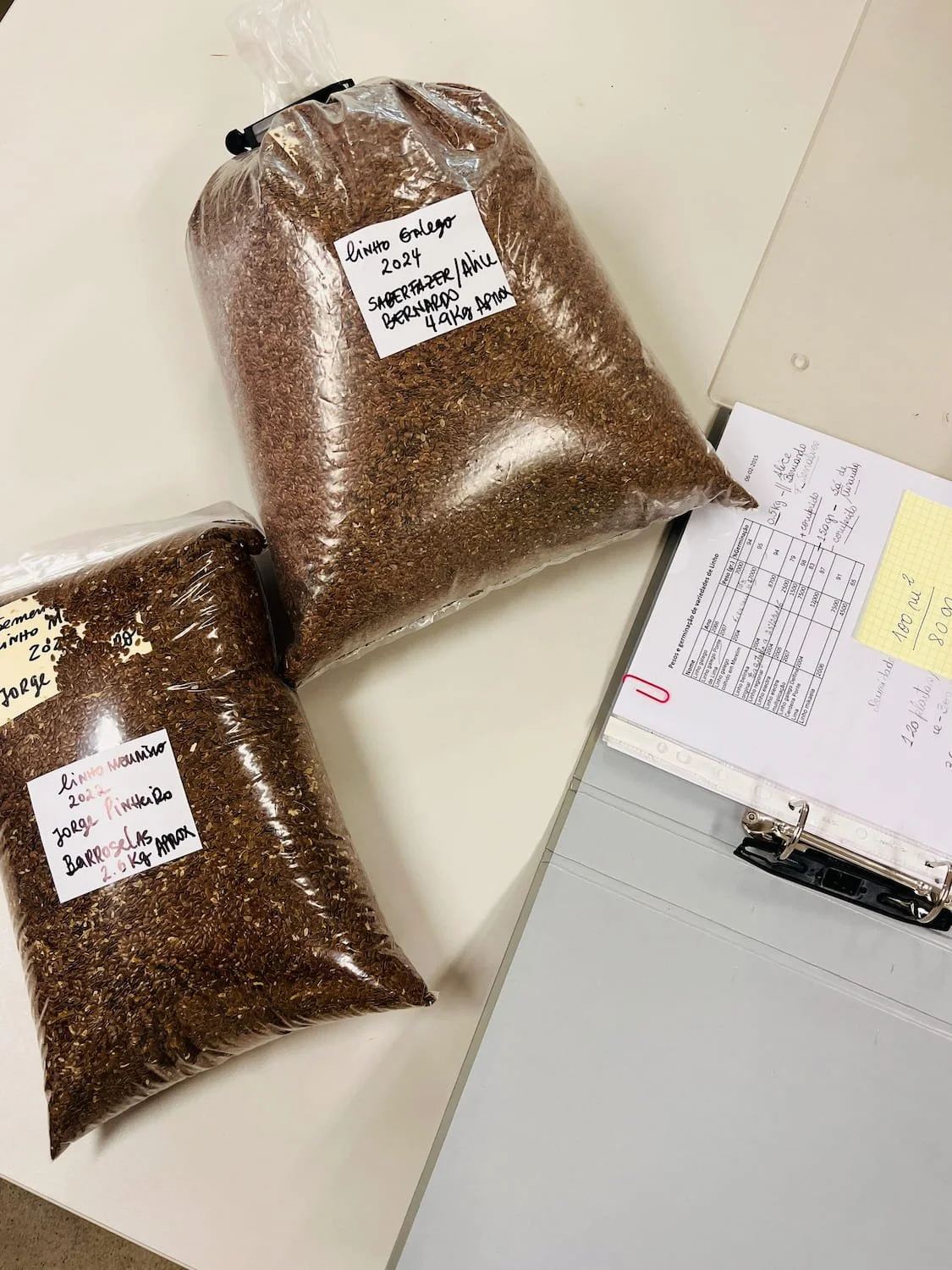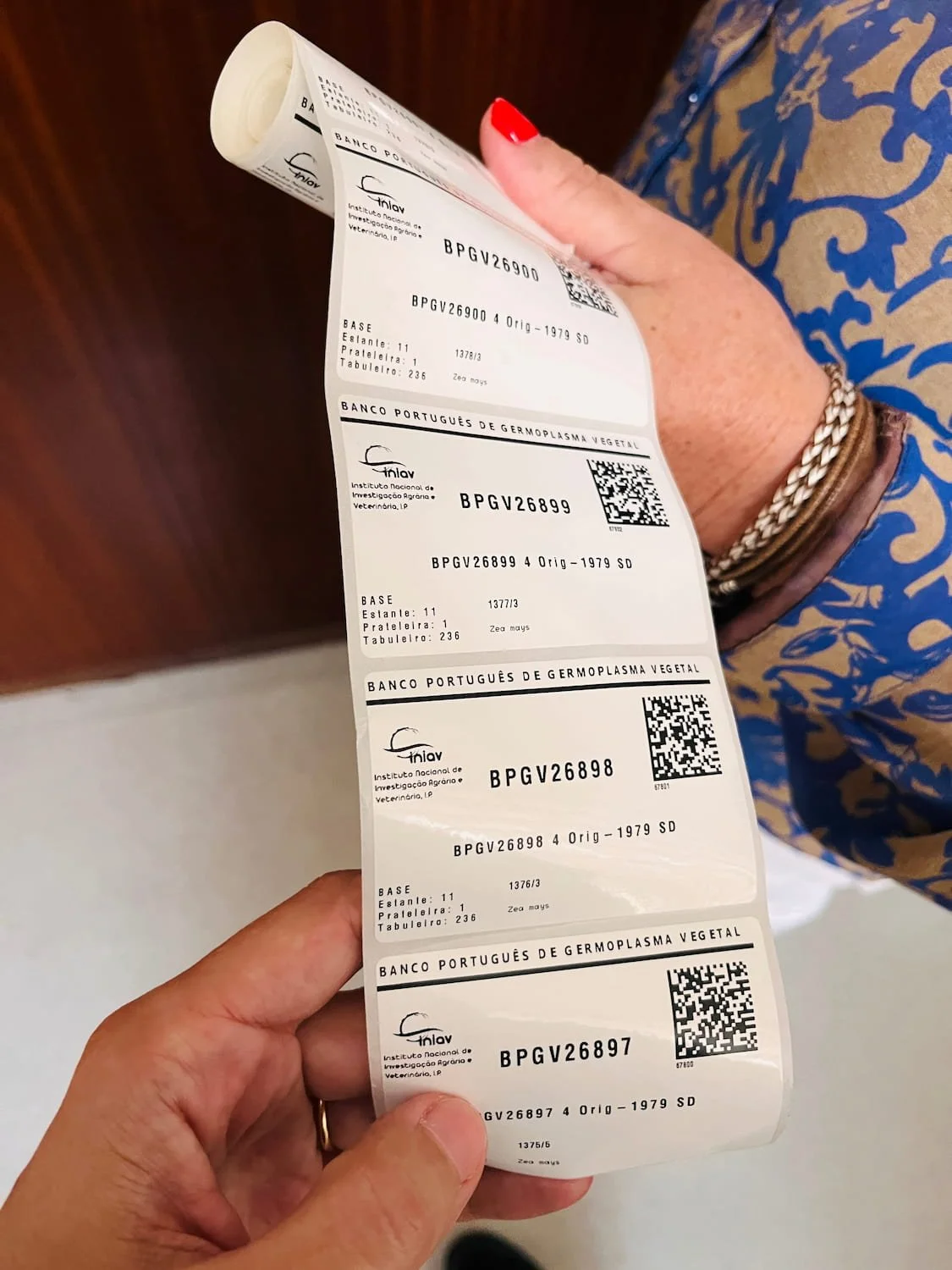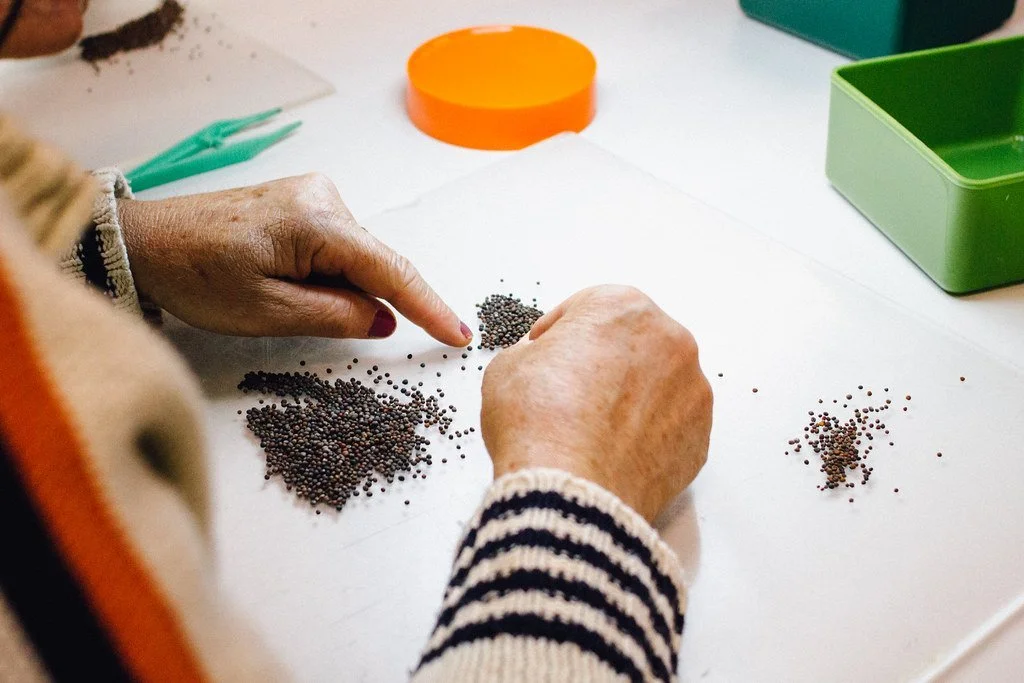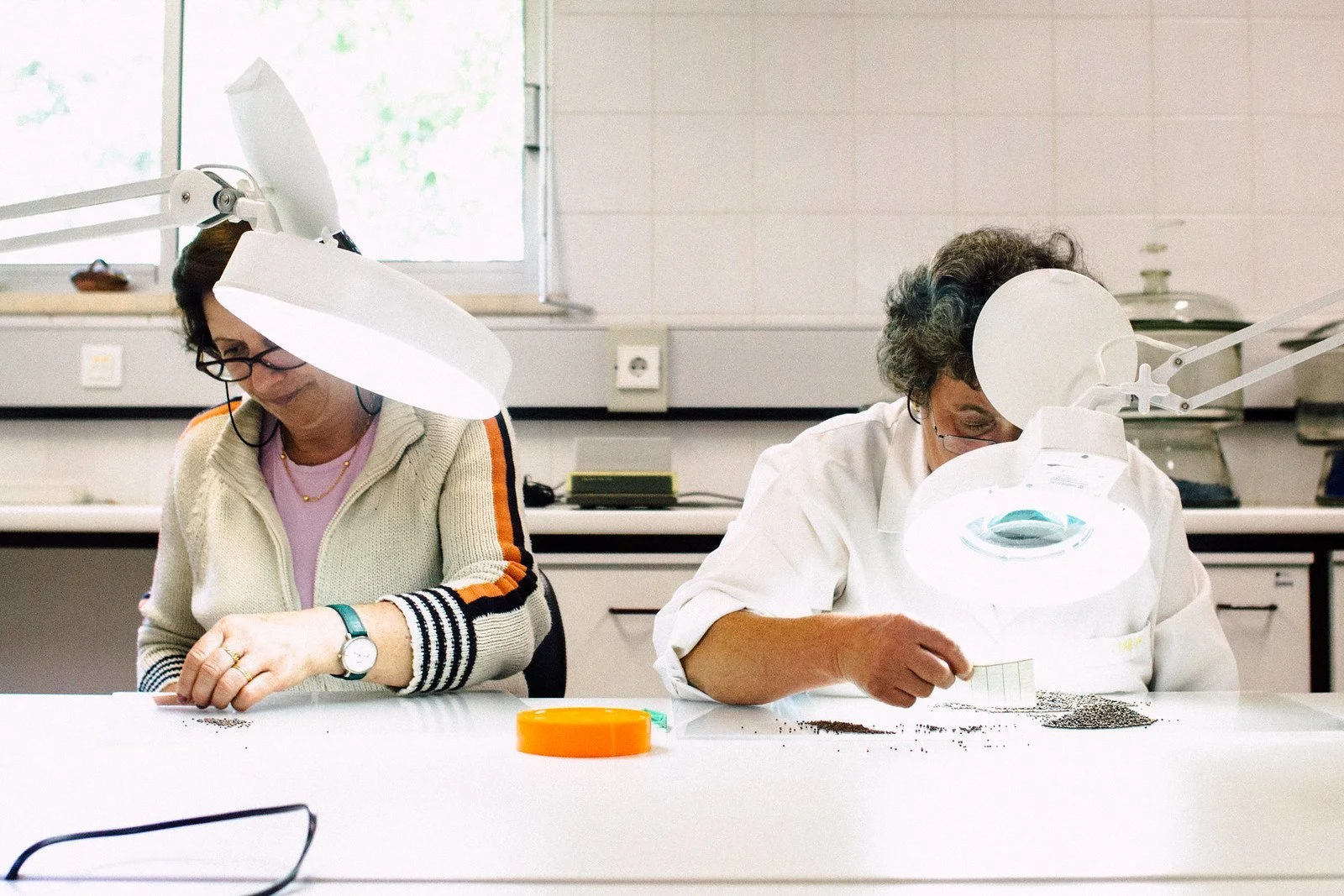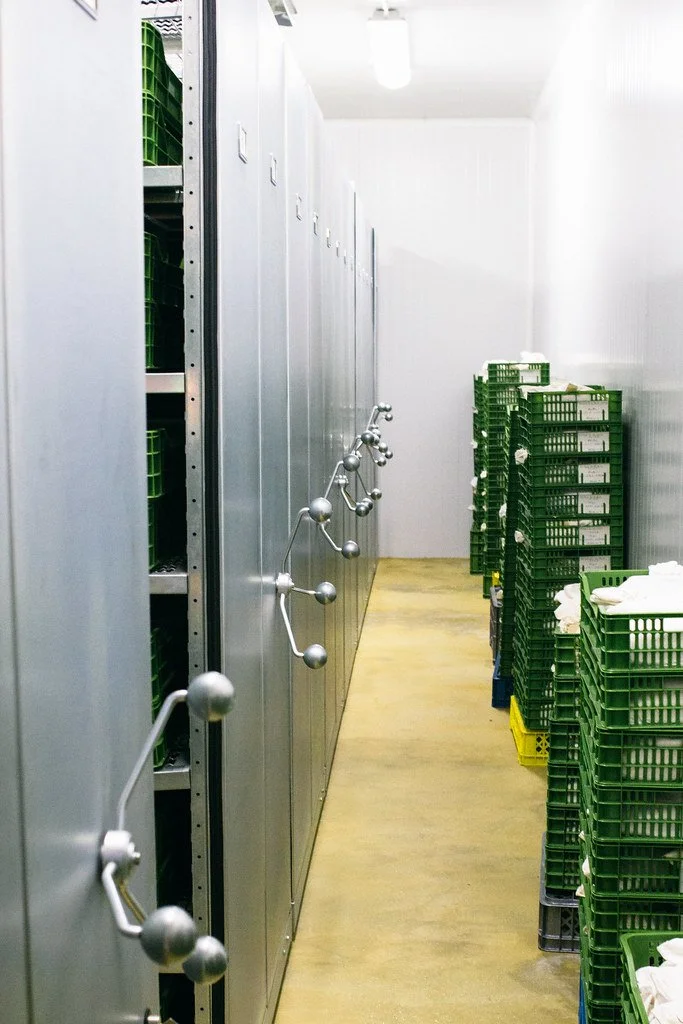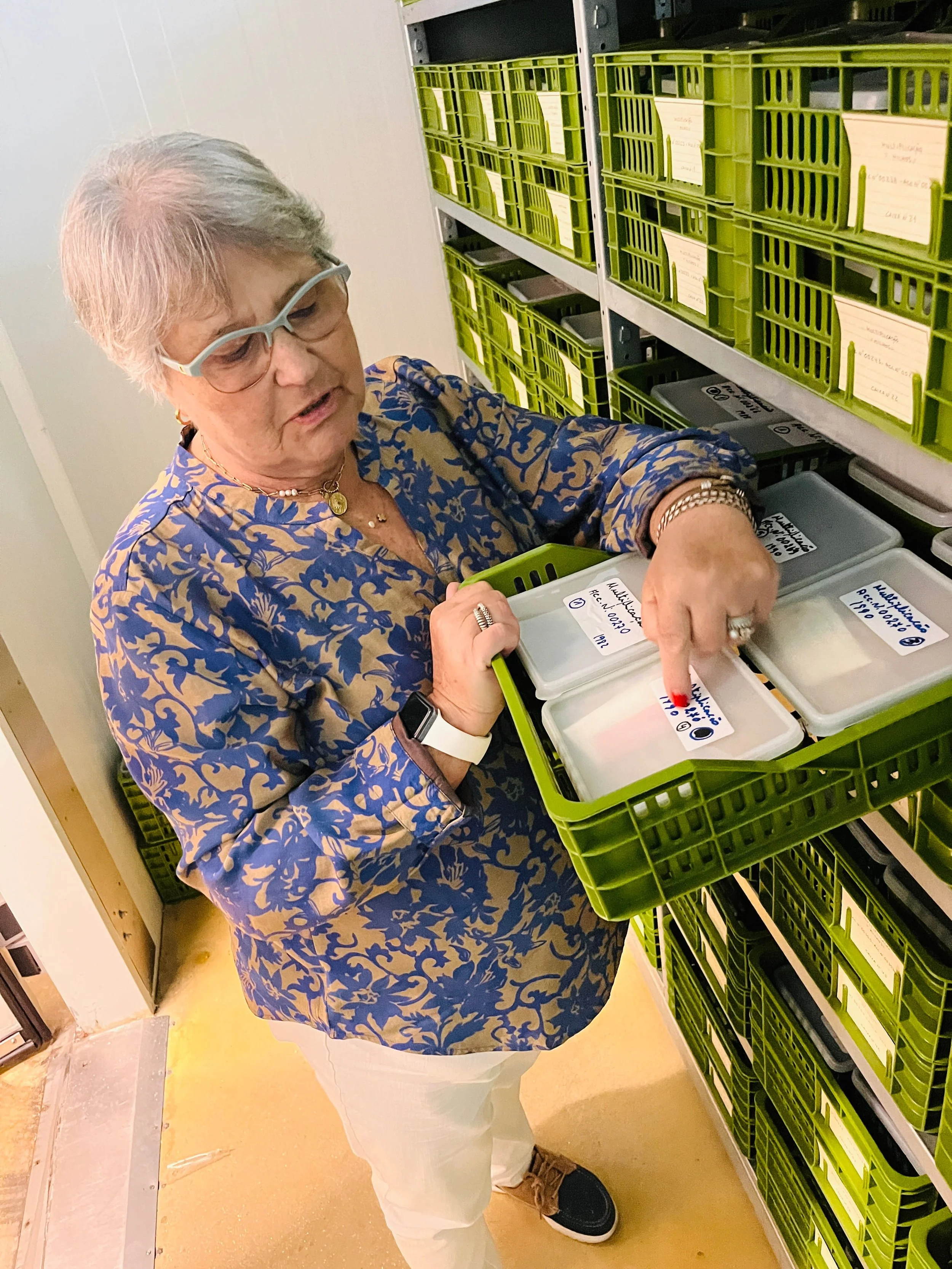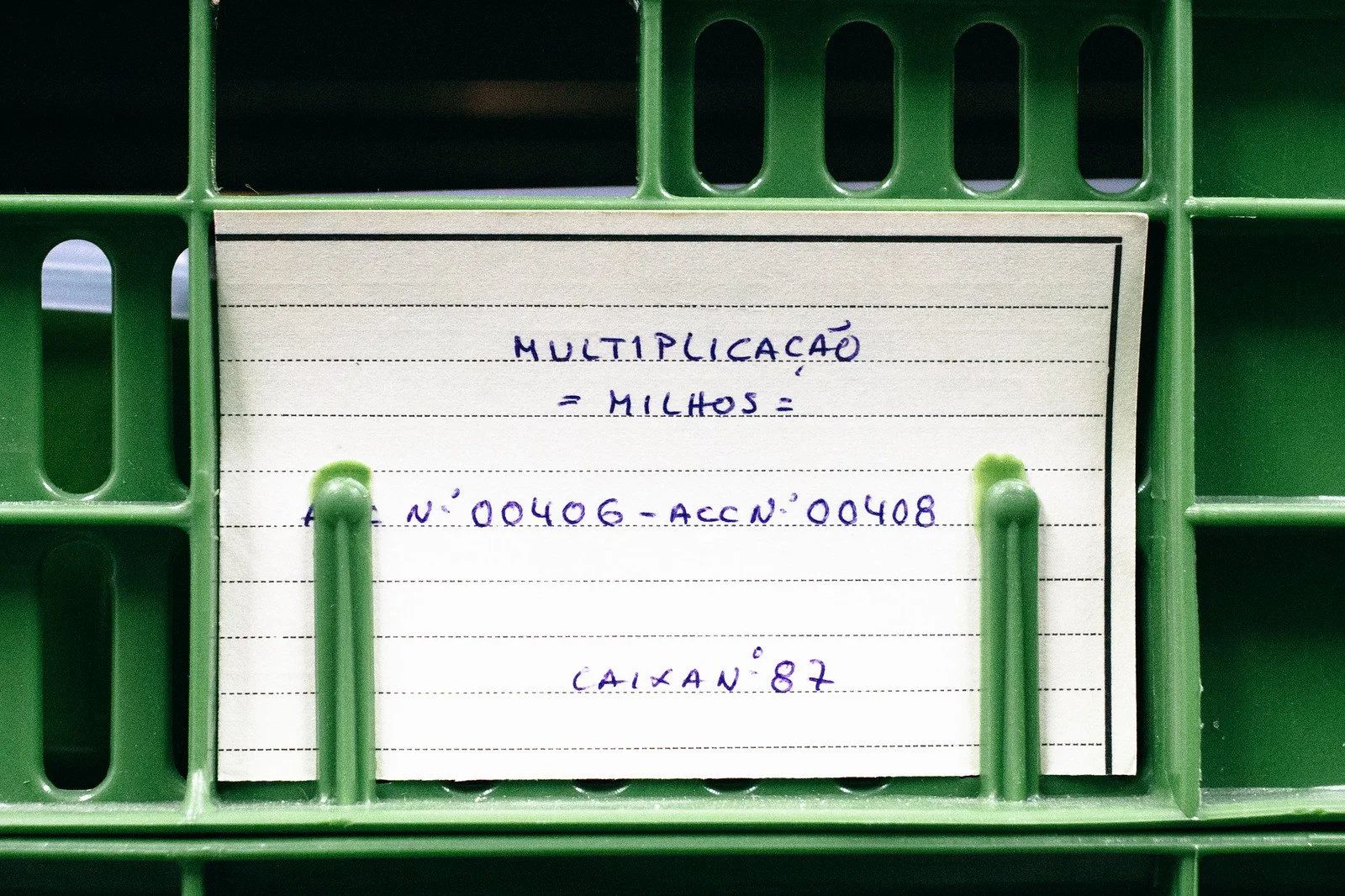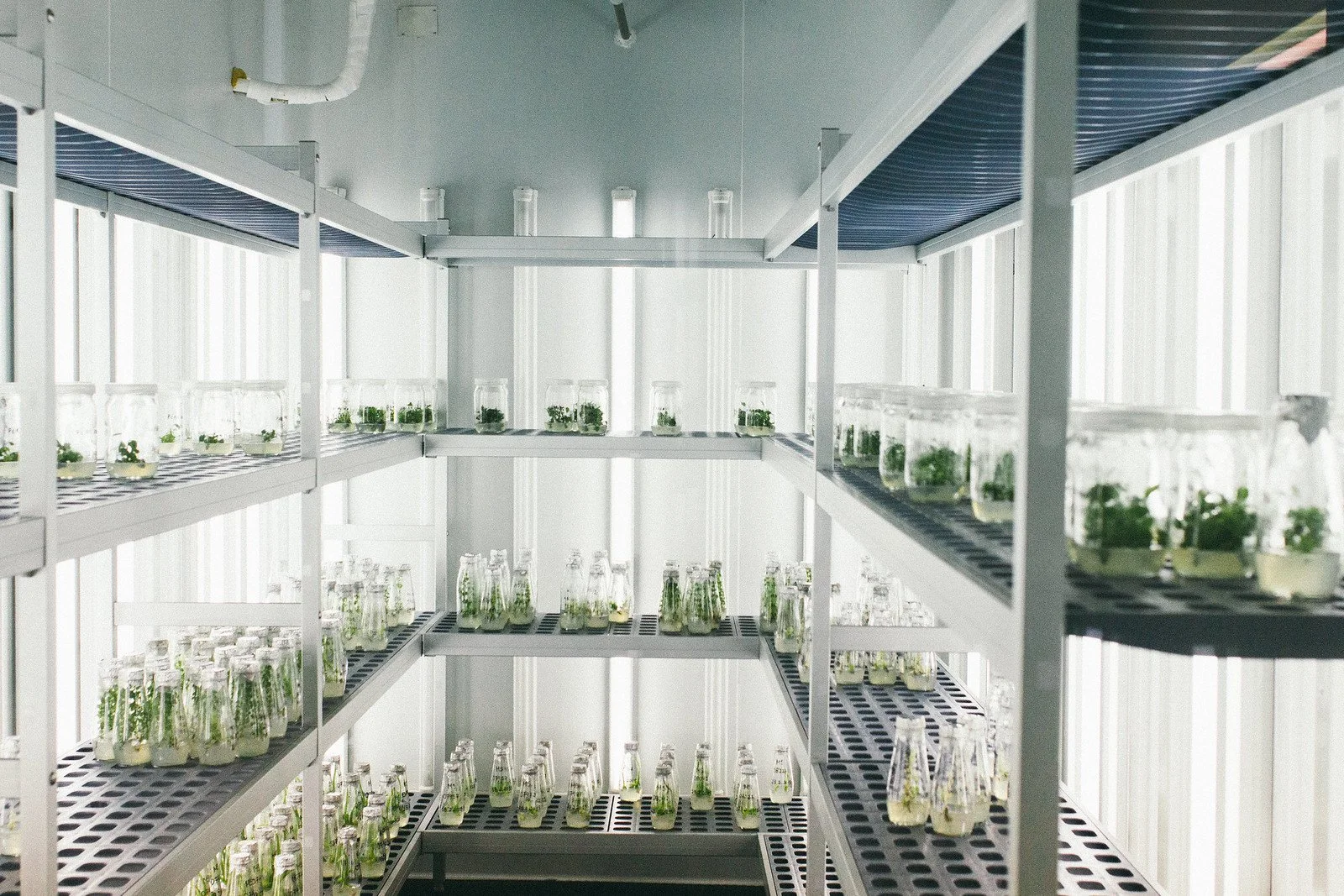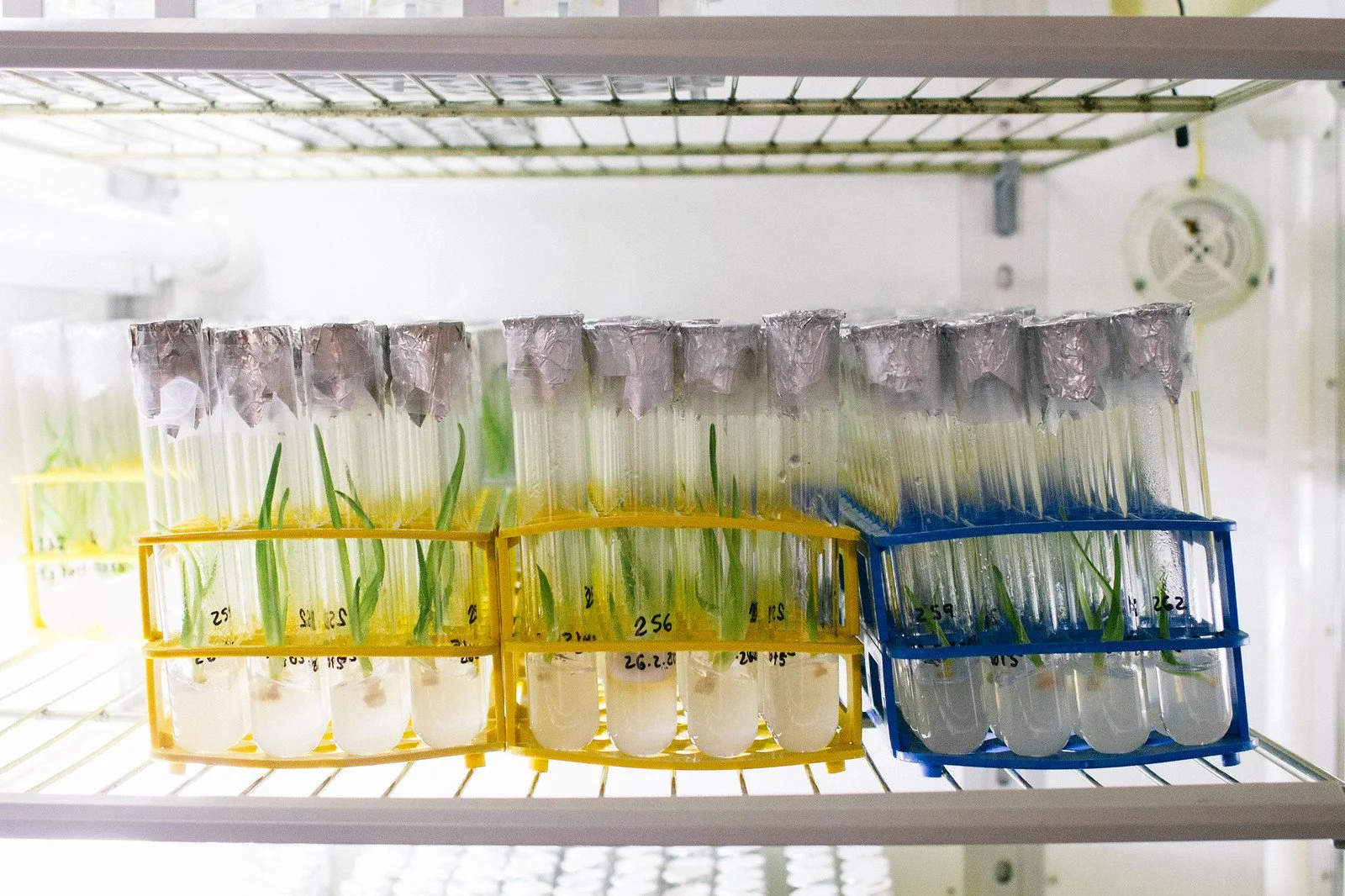The return of our flaxseed to the National Portuguese Seed Bank
The surplus of Galego and Mourisco Flaxseed that we delivered to the Portuguese National Seed Bank
2024 Galego flaxseed that was returned to the Portuguese National Seed Bank
This year marks 10 years since we began cultivating Galego flax and studying the production and processing of this extraordinary fibre! In 2015, while searching for seeds to start our work, at the time on the Serralves Foundation farm, we obtained them through the Portuguese National Seed Bank (Banco Português de Germoplasma Vegetal). Initially, it was only a small amount, just 500 grams, but it was enough to start a production that has now lasted for over a decade.
Since 1977, our National Seed Bank has been, in very simple terms, ‘collecting, conserving, evaluating, documenting and valuing the genetic resources that guarantee the National System for the Conservation of Genetic Resources’. It is a seed bank, and more, which currently houses 47,000 samples of 150 species, which are not only conserved but also multiplied on the 8-hectare site that is part of the institution's facilities in São Pedro de Merelim (Braga).
The Bank provides seeds on condition that the recipient undertakes to conserve and propagate the requested variety. The seed we used was originally harvested in Ponte de Lima and was last propagated on National Seed Bank land in 2007, having been conserved in their active collection ever since.
The importance of conserving genetic biodiversity is one of the points we find most difficult to teach. It is a very technical subject, which requires depth to be understood, and which people feel distant from their reality, despite ironically being surrounded by it. This apparent distance makes it difficult to internalise the importance of working with local genetic resources, such as the regional varieties of flax we grow or the native Portuguese sheep breeds we work with, and, of course, the exceptional nature of instruments such as the National Seed Bank.
Last September, we made a brief visit to return almost 5 kg of Galego flax seed from our 2024 production. With the 2025 season over and the seed we will use in 2026 harvested, the surplus from 2024 is no longer of any use to us, so the right thing to do is to return this seed to the Bank, where it will be properly preserved, in conditions that are truly suitable for this purpose. We also delivered a good amount of Mourisco flaxseed, a regional variety of winter flax that is even rarer than Galego flax, originally collected and cultivated by Jorge Pinheiro.
Here, we do not have the space or refrigeration conditions that would allow us to store our seeds for more than two or three years. Therefore, we can only keep the seeds that we grow annually. On the other hand, we fulfil our role of multiplying the seeds so that they may eventually be available to others who are starting out on their journey.
The Portuguese National Seed Bank, located in Braga
Once delivered, our seed will undergo a careful cleaning and storage process.
The Seed Bank’s active collection
The Seed Bank’s active collection here being shown by Dr.Ana Maria Barata, its director


